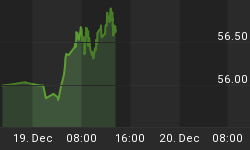The Financial Times is reporting that Wells Fargo expects [it's] earnings to fill [its stress test] deficit.
"Wells Fargo, deemed to need $13.7bn of capital by the US government's stress test last week, claims to have the earning power to fill its capital deficit by November and apply to repay "as soon as practical" $25bn of government funds.
"We think we already have a lot of capital and, with our earnings, we are accumulating regulatory capital at a very high rate," said Howard Atkins, chief financial officer."
...after a good first quarter most banks thought they could earn their way out of the crisis by using rising profits to reduce the need for fresh capital."
[Before I continue let me remind you of the work I did in "Stressed Out" last week. Briefly, in that piece, I worked through the reasons why the stress test was invalid and utterly useless. I am writing from that assumption so read up on that if you'd like to get up to speed.]
As of today, Howard Atkins, Wells Fargo's CFO says that the bank "Thinks it already has a lot of capital." This statement, in and of itself, is oxymoronic when one considers the stress test assumptions. Mr. Atkins: What does "a lot" mean to you? I'll tell you what it means to me, "a lot" means Wells does not have enough capital. How do I know this? I know this because the entity that wants to prove Wells has enough capital worse than anyone else, the Federal government, says they need roughly $14 Billion more dollars. I also know this because no bank, including Wells, is likely to repeat their stellar first quarter profits through the remainder of the year to fill any "Gap". But most importantly I know this because the stress test assumptions were anything but stressful and Wells has proven an inability to forecast in the past.
Flashback...Oct. 3, 2008: Bloomberg reported "Wachovia's Board Approves Wells Fargo Merger."
"Today's announcement creates one of the strongest financial firms in the world and is great for all Wachovia constituencies: our shareholders, customers, colleagues and communities. This deal enables us to keep Wachovia intact and preserve the value of an integrated company, without government support. The market presence and composition of our businesses, along with our service-oriented cultures, are extraordinarily complementary and this combination creates great potential for sustained stability and growth."
Now jump two short weeks forward to Oct. 15, 2008 when the news broke that Wells Fargo's 3q income was down 25%. At that time Howard Atkins alongside Wells CEO John Stumpf, presented and said the following:
"Wells Chief Financial Officer Howard Atkins says the company will go ahead with plans to raise $20 billion in the capital markets, largely through sales of common stock. That is despite an announcement Tuesday that the federal government will invest $25 billion in the bank, buying preferred stock, as part of the federal effort to free up the credit markets.
Wells had announced it would need the $20 billion to shore up its balance sheet when it takes on Wachovia and its large, suspect mortgage portfolio.
Atkins said the $20 billion in capital from the markets and the money from the government would be used to increase business done by Wells. He noted that Wells was one of the few lenders providing credit for existing customers and new customers during the credit crunch."
Move forward with me one final time to January 1st, 2009 when Bloomberg wrote this:
"Wells Fargo & Co.'s $12.7 billion acquisition of Wachovia Corp. faces immediate stress as economists predict home foreclosures will keep rising and some forecast unemployment in 2009 to reach a 26-year high.
Wells Fargo Chief Executive Officer John Stumpf said as recently as Dec. 10 that Wachovia's $482.4 billion loan portfolio will produce $60 billion in losses over the next three years, with about 60 percent coming from option adjustable-rate mortgages. Wells Fargo, based in San Francisco, is the second- biggest U.S. mortgage lender, behind Bank of America Corp.
Wachovia brings added housing risk in California, home to its Golden West Financial Corp. unit, and Florida, which claims the second-highest foreclosure rate in the country. Unemployment rates in California and Florida were 8.4 percent and 7.3 percent, respectively, in November, compared with 6.7 percent nationwide. Among economists surveyed by Bloomberg, the highest estimate for U.S. unemployment in the third quarter is 9.5 percent, a level not seen since 1983.
"They thought they were anticipating the worst," said Lykken, referring to Wells Fargo's loss estimates for Wachovia. "The problem is the worst got a whole lot worse."
A WHOLE lot worse indeed. From the November figure quoted above, until now, the country's unemployment rate has risen from 6.7% to 8.9% and doesn't show signs of falling soon. At the same time foreclosures have not really stopped rising [If you consider the fact that Fannie Mae, Freddie Mac, and Florida all have a moratorium on foreclosures] according to Realty Trac. Lastly, and most important of all, the commercial real estate bubble is popping and very few are willing to see or acknowledge it. Read this "The One Trillion Dollar Commercial Real Estate Time Bomb" and then look at the headlines I've laid out below from the past few weeks:
On June 8th, Wells Fargo, along with the rest of the banks who failed the stress test, will present their long term viability plans to the government. On that day they will no doubt continue to state that they will come up with an additional $13.7 billion through earnings. When they say this don't believe it. Neither Wells, nor the Government, has been able to "anticipate the worst" in the past and this time around will be no exception.















